The healthcare industry has become a prime target for cybercriminals, with ransomware attacks posing significant risks to patient safety, data integrity, and financial stability. As cyber threats continue to escalate, healthcare organizations face mounting challenges in safeguarding sensitive information and maintaining operational continuity.
The following statistics highlight the critical state of cybersecurity in healthcare, revealing alarming vulnerabilities and the urgent need for comprehensive strategies to mitigate these risks.
79% of Healthcare Organizations Have Experienced a Ransomware Attack in the Past Year
According to Sophos’s “The State of Ransomware in Healthcare 2023,” 79% of healthcare organizations reported experiencing a ransomware attack in the past year. This high rate of attacks shows the sector’s vulnerability due to outdated systems and valuable data. Beyond financial loss, these attacks can disrupt patient care and damage trust. The frequent incidents underscore the need for strong defenses and preparedness in the healthcare industry.
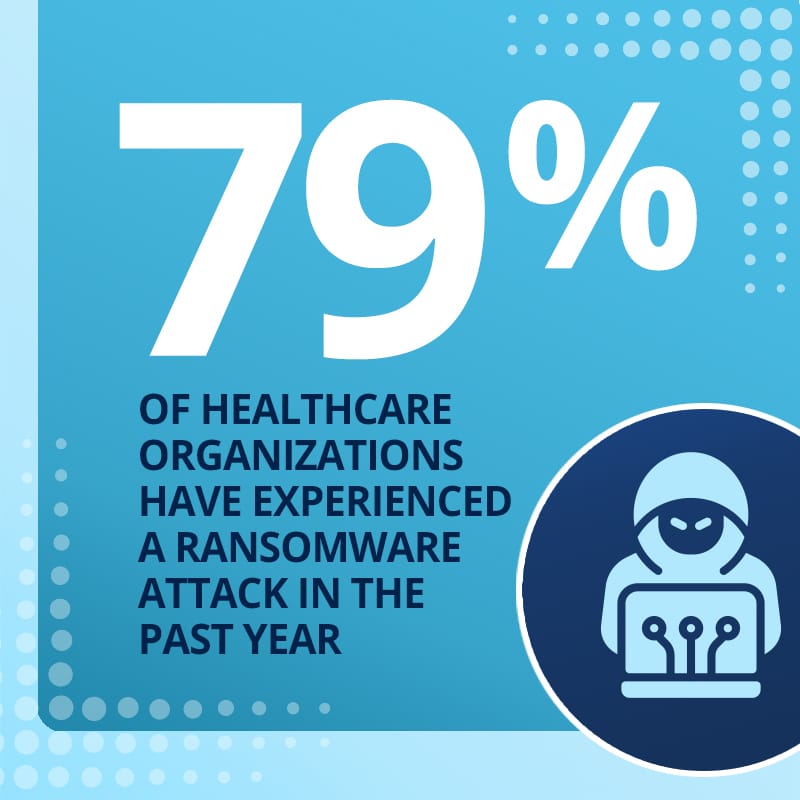
On Average, a Ransomware Attack Costs a Healthcare Organization $1.85 Million per Incident
Ransomware attacks are not only common but also costly. IBM’s “Cost of a Data Breach Report 2023” notes that the average cost of a ransomware attack in healthcare is $1.85 million per incident, including ransom payments, recovery, lost revenue, and fines. These financial impacts strain already tight budgets, highlighting the importance of investing in cybersecurity measures to prevent attacks and reduce financial risks.
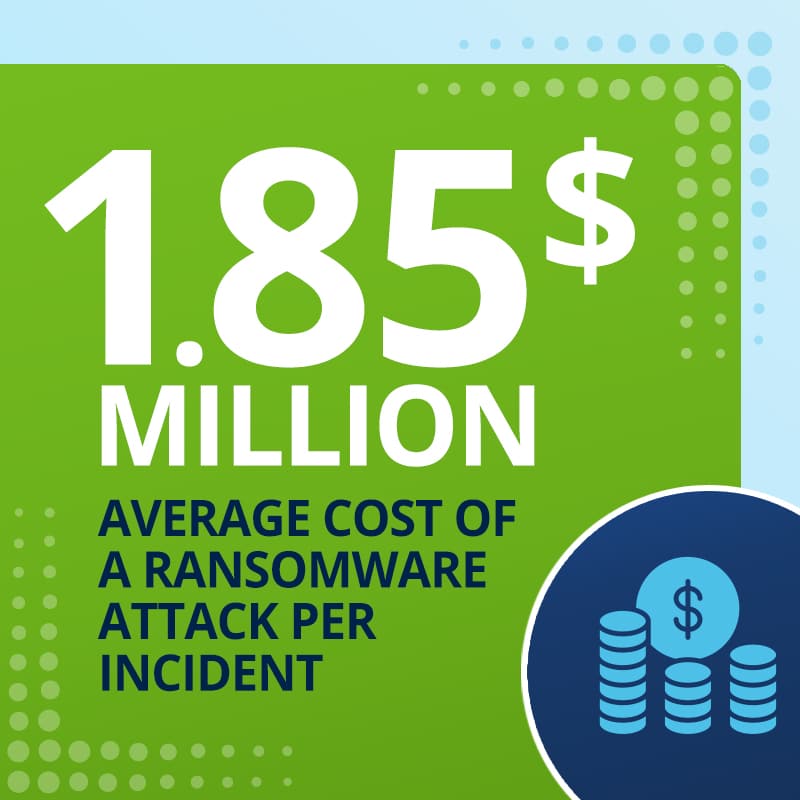
50% of Healthcare Organizations Do Not Have a Cyber Incident Response Plan
Ponemon Institute research shows that 50% of healthcare organizations lack a formal cyber incident response plan, leaving many unprepared for effective attack management. Without these plans, recovery is slower and costlier, increasing operational risks. Incident response plans are essential for guiding the recovery process and minimizing disruption, emphasizing their critical role in healthcare cybersecurity strategies.
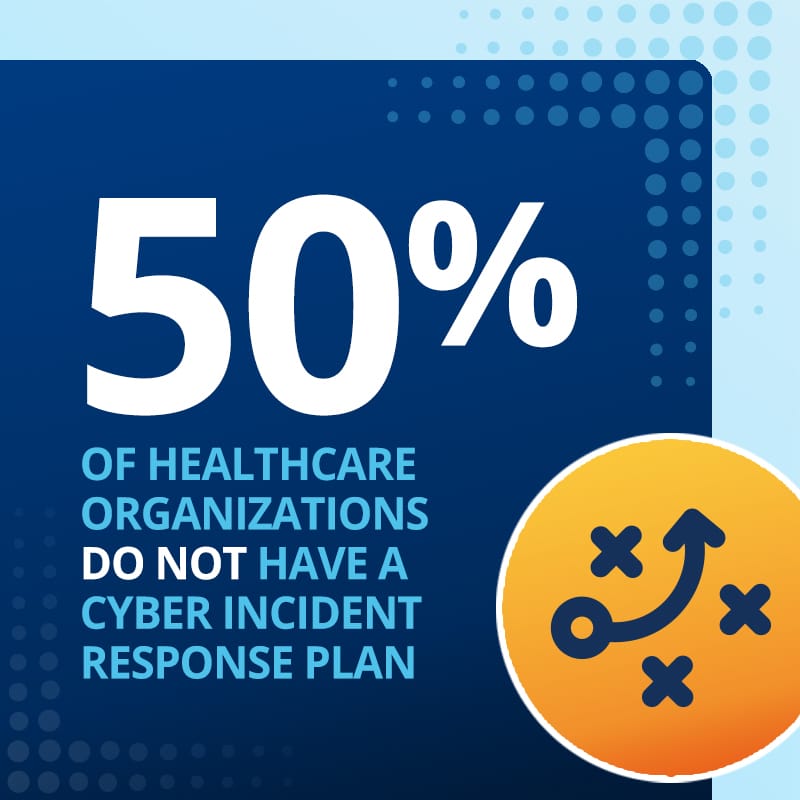
24 Days is the Average Downtime for Healthcare Organizations After a Ransomware Attack
The Ponemon Institute’s “2023 Cost of Data Breach Report” states that healthcare organizations face an average downtime of 24 days after a ransomware attack. This downtime disrupts patient care, delays procedures, and blocks access to vital records, affecting healthcare delivery and patient outcomes. The prolonged impact underscores the need for efficient incident response and strong backup systems to reduce downtime.
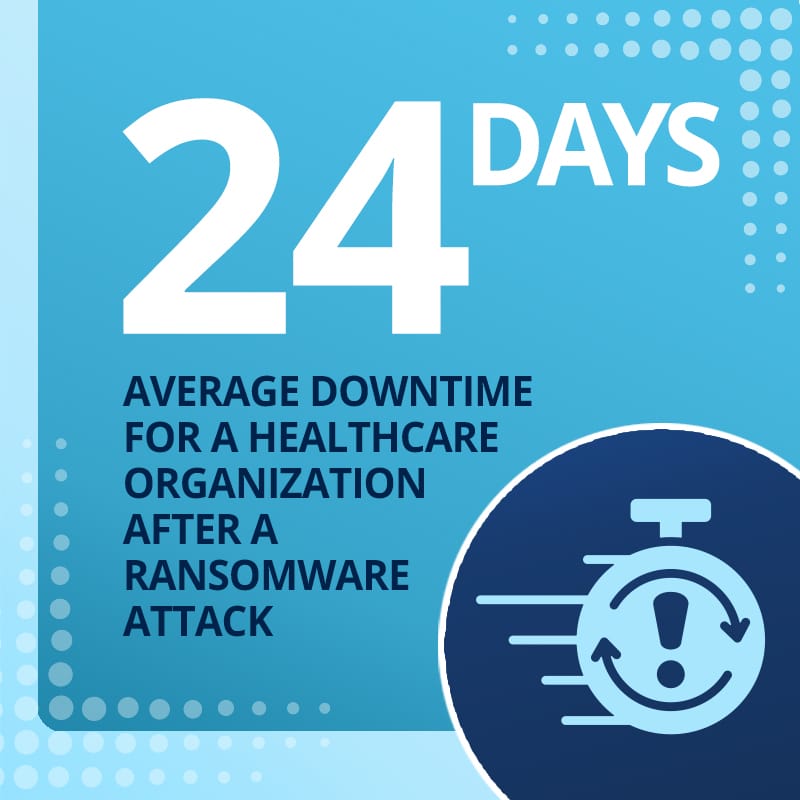
60% of Healthcare Organizations Cite Inadequate Staffing as the Biggest Barrier to Cyber Security.
The shortage of cyber security professionals leaves systems vulnerable, as overburdened teams struggle to manage threats and respond to incidents promptly. In an industry where patient data security is critical, this staffing gap heightens the risk of breaches and cyber threats, jeopardizing patient safety and organizational integrity.
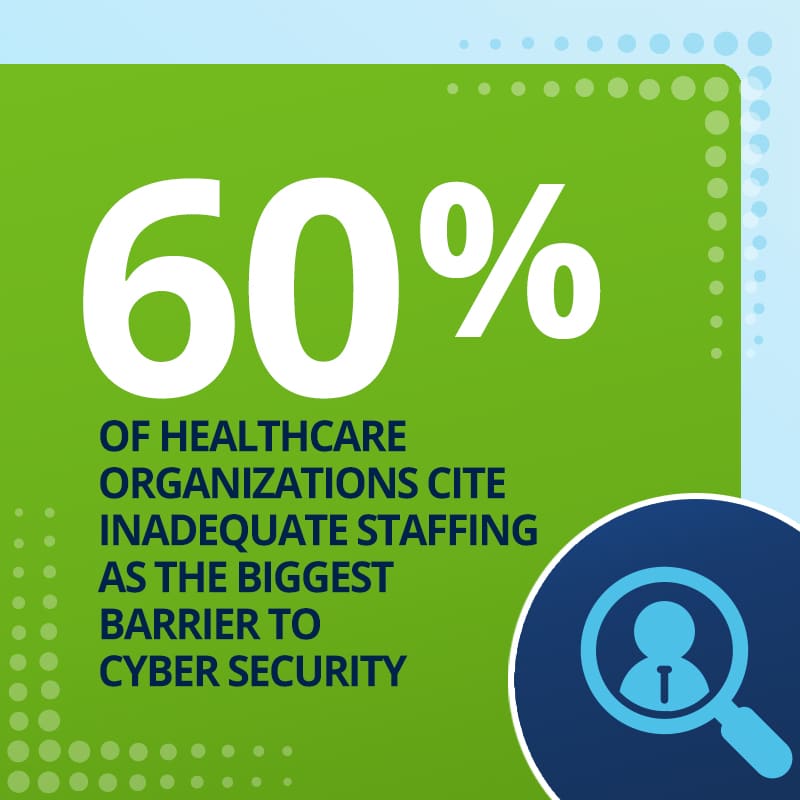
Ready to Level Up Your Security Operations?
ISG Technology has helped hundreds of healthcare organizations level up their IT operations, prevent cyber attacks and maintain HIPAA compliance over four decades. Contact Us to get in touch with our IT Healthcare Division.
